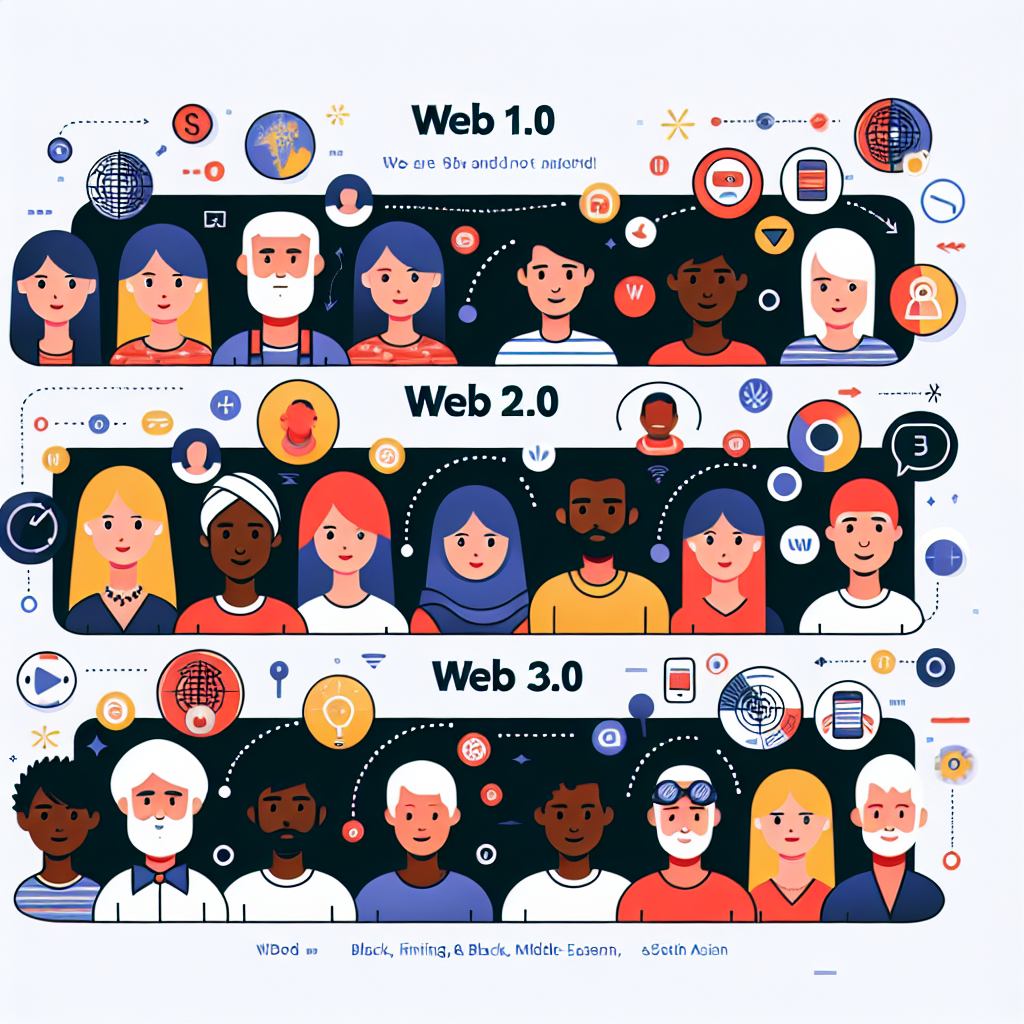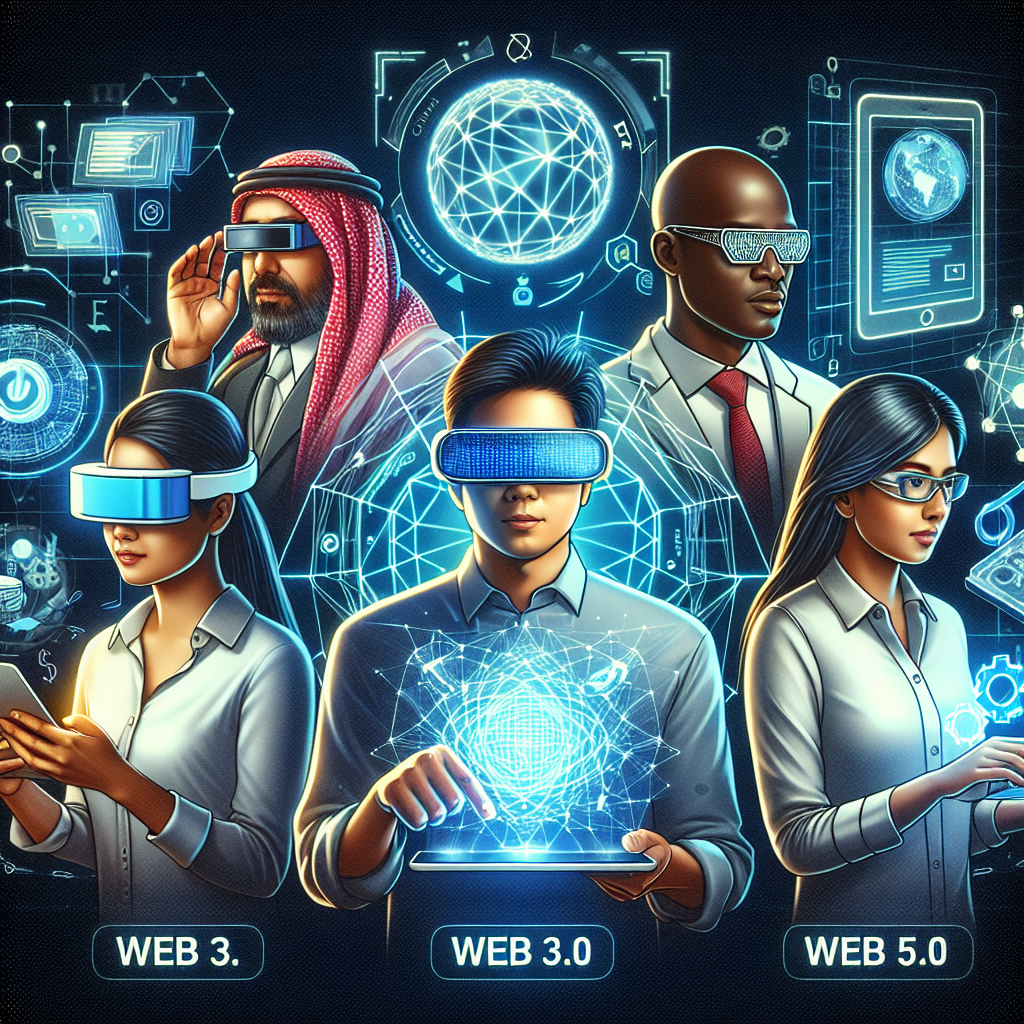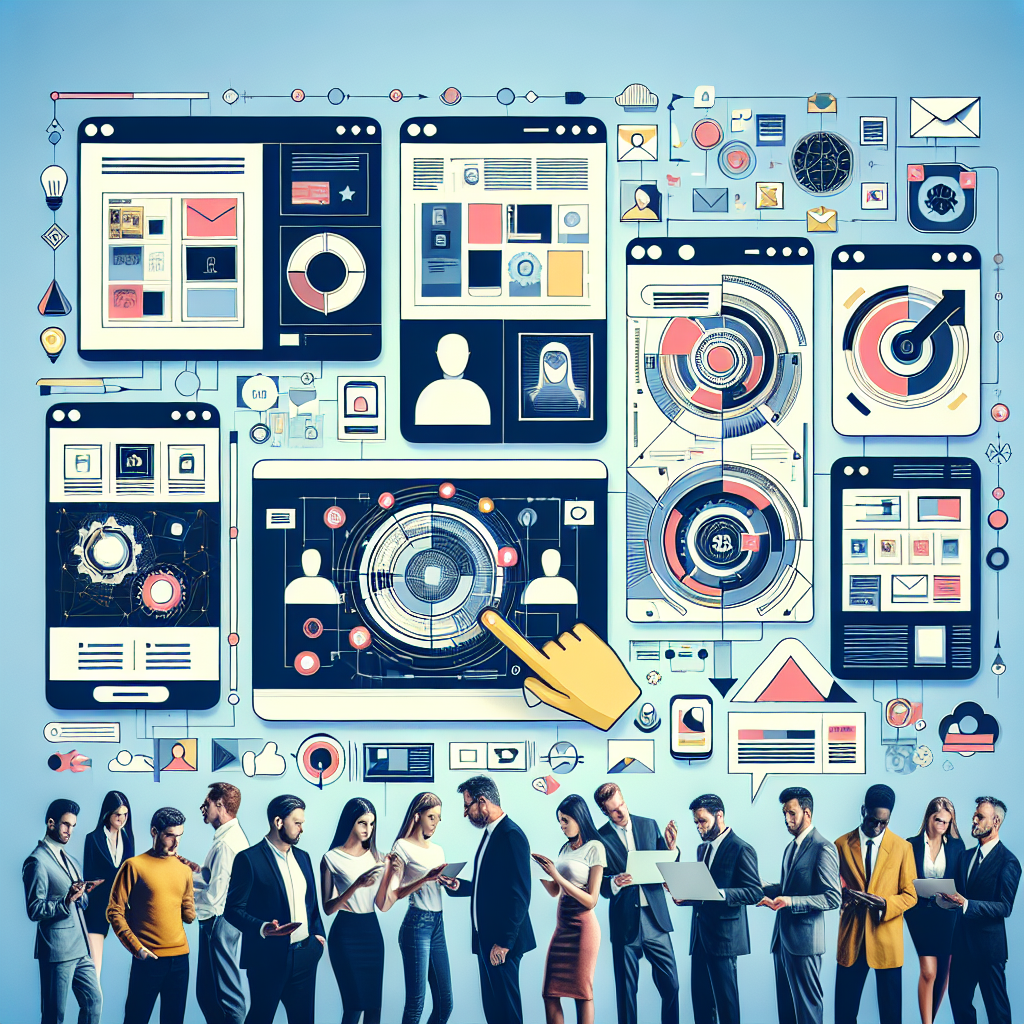Innovative Solutions for Web Development: Understanding Web1, Web2, and Web3 Technologies

Briefly About Web: Understanding the Evolution from Web 1 to Web 3.0

In the ever-changing realm of the internet, many people wonder, what is Web 1 and Web 2? To grasp the significance of todays online landscape, let’s explore the journey from the basic web2 and web3 models to the revolutionary Web 3.0.
The Birth of Web 1.0
Initially, the internet was quite simple, often referred to as Web 1.0. Picture it like a digital library: a place where you could read information but not interact much. Websites were mostly static pages with limited user engagement. Imagine the early days of browsing through text-heavy websites like HTML.info, where users were mere spectators.
- ⭐ Static Web Pages: Information was there, but interaction was minimal.
- ⭐ Limited Functionality: Basic forms and browsing without engaging.
- ⭐ Information Overload: Plenty of content available, but little direction for users.
A Transition to Web 2.0
With the emergence of Web2, the internet transformed into a more interactive platform. This phase was about social connection and user-generated content. Think of Facebook and YouTube — platforms that encouraged users to create, share, and connect. Users morphed from passive readers to active participants.
Statistics show that nearly 80% of internet users engage in some form of social media, showcasing how Web 2.0 changed the way businesses interact with customers.
- ⭐ Interactivity: Users started to connect, comment, and contribute.
- ⭐ Dynamic Content: Websites began to refresh and evolve based on user input.
- ⭐ Enhanced Engagement: Brands could build community, like how Nike engages users through social platforms.
What Lies Ahead? Entering Web 3.0
Progressing towards web 3.0, we are witnessing a shift towards a decentralized and user-centric internet. But what does this mean? Web 3.0 advertising focuses on utilizing AI and machine learning to personalize user experiences, making your interactions seamless and tailored. For instance, instead of one-size-fits-all ads, imagine receiving promotions perfectly aligned with your interests!
The Features of Web 3.0
- ⭐ Decentralization: Users have control over their data, reducing reliance on big tech companies.
- ⭐ Semantic Web: Enhanced data connections lead to more intuitive search results.
- ⭐ AI Integration: More intelligent applications enhance user interaction.
Real-world Impact
Let’s look at a couple of scenarios where Web 3.0 business is making waves. For instance, did you know that companies leveraging blockchain technology see an increase in customer trust by 66%? This shift allows businesses to build more secure transactions and interactions.
One example is a local bakery that utilized Web 3.0 principles by tracking ingredient sourcing through blockchain. This transparency not only engaged customers but also increased sales by reaching consumers seeking sustainability.
Curious about how your business can leverage these advancements? Our team at Artivale can provide tailored strategies utilizing the latest technologies to enhance your online presence. With 20 years of experience and a full range of services—from software development to maintenance—were equipped to guide you through these exciting changes. Contact our customer relations manager, Alexandra, at [email protected] or simply visit us at artivale.com!
Frequently Asked Questions
- ⭐ What is Web 1.0? - The initial phase of the internet characterized by static pages.
- ⭐ What differentiates Web 2.0 from Web 1.0? - Web 2.0 allows interactions and user-generated content.
- ⭐ Is Web 3.0 already in use? - Yes! As companies harness AI, decentralization, and blockchain.
- ⭐ How does Web 3.0 enhance business? - Through personalized experiences and secure transactions.
- ⭐ What role does advertising play in Web 3.0? - It becomes more refined and tailored to individual preferences.
- ⭐ Are there any statistics regarding Web 3.0 benefits? - Yes, companies using these technologies have seen customer trust increase by up to 66%.
- ⭐ What business strategies can I follow in this new phase? - Focus on decentralization and transparency with customers.
- ⭐ How can I get assistance for my business web needs? - Feel free to reach out to Artivale for a tailor-made consultation.
- ⭐ Are there examples of businesses thriving with Web 3.0? - Yes, for instance, a bakery increased sales by tracking ingredient sourcing.
- ⭐ Can small businesses benefit from Web 3.0? - Absolutely! Even small changes can lead to significant customer trust and engagement.
What is Web 1 and Web 2? Discover the Key Differences and Their Impact on Online Business

When we talk about the internet’s evolution, two terms often come up: Web 1 and Web 2. But what exactly do these terms mean? And how have they changed the landscape of online business? Let’s dive into these concepts and uncover their impact on how we interact online today.
Understanding Web 1.0
Think of Web 1.0 as the early days of the internet—a static environment where content was mostly read-only. Users accessed information but rarely interacted with it. Websites were simple, often resembling digital brochures, where the primary goal was to inform rather than engage.
- ⭐ Static Content: Websites featured unchanging text and images.
- ⭐ Limited Interaction: Users could read but not easily contribute or modify content.
- ⭐ Basic Design: User interfaces were simplistic, lacking modern navigational features.
Imagine you were browsing through a website in the 90s. You might find a colorful background with information about a business, yet you couldn’t leave comments or share your thoughts. This was the essence of Web 1.0—a digital archive.
The Rise of Web 2.0
Fast forward a few years, and welcome to Web 2.0, a revolutionary phase in which the internet became a platform for social interaction and collaboration. Suddenly, both individuals and businesses transformed into content creators.
- ⭐ User-Generated Content: Platforms like MySpace and YouTube allowed users to share videos, blogs, and music.
- ⭐ Interactivity: Comments, likes, and shares became fundamental, allowing users to engage in real time.
- ⭐ Rich Media Integration: Websites became dynamic, offering mixed content like videos, podcasts, and interactive graphics.
Consider the power of social media today. Companies leverage platforms like Instagram and Twitter to directly engage with customers. Did you know that around 70% of marketers believe in the importance of user interaction for brand loyalty? This highlights how pivotal Web 2.0 has been in shaping online business strategies.
Key Differences Between Web 1.0 and Web 2.0
| Feature | Web 1.0 | Web 2.0 |
|---|---|---|
| Content Type | Static | User-generated |
| User Interaction | Minimal | High |
| Design | Simple and basic | Dynamic and engaging |
| Communication | One-way | Two-way |
| Examples | GeoCities, early HTML websites | Facebook, YouTube, Wikipedia |
Impact on Online Business
The transition from Web 1.0 to Web 2.0 fundamentally altered how businesses operated online. Here’s how:
- ⭐ Increased Customer Engagement: Brands can foster community and loyalty through direct interactions.
- ⭐ Cost-Effective Marketing: Social media strategies have become essential, allowing businesses of all sizes to reach wider audiences without breaking the bank.
- ⭐ Data-Driven Decisions: Businesses now analyze user interactions and preferences to enhance marketing strategies and improve services.
Real-World Example
Let’s look at a fashion retailer that started with a basic website showcasing their product line during the Web 1.0 era. While they had a dedicated clientele, their reach was limited. Upon transitioning to a dynamic Web 2.0 model, they began engaging customers through social media platforms, hosting competitions, and collaborating with influencers, resulting in a significant traffic and sales increase of approximately 50% in just one year!
Conclusion
In summary, understanding the differences between Web 1 and Web 2 is essential for any business looking to thrive in today’s digital world. The interaction and community-based strategies of Web 2.0 have opened countless doors for engagement, providing businesses with the tools needed to connect with customers more meaningfully. Interested in making the most out of your online presence? Reach out to our professional staff at Artivale! With 20 years of experience, we offer a full suite of services tailored to your business needs. Contact us at [email protected] or visit our site at artivale.com to start transforming your online strategy today!
Frequently Asked Questions
- ⭐ What is Web 1.0? - The original internet phase characterized by static web pages.
- ⭐ How does Web 2.0 differ from Web 1.0? - Web 2.0 allows user-generated content and interactive features.
- ⭐ What role does social media play in Web 2.0? - Social media enables businesses to engage directly with customers.
- ⭐ What are some examples of Web 1.0 websites? - Early internet platforms like GeoCities and simple HTML sites.
- ⭐ What percentage of marketers believe interaction is vital? - About 70% of marketers emphasize the importance of user interaction.
- ⭐ Can small businesses benefit from Web 2.0? - Yes, they can engage with customers effectively through social media.
- ⭐ What are the examples of user-generated content? - Platforms like YouTube and Wikipedia thrive on user contributions.
- ⭐ How can businesses maximize their online presence today? - By adopting engaging, interactive strategies and utilizing social media effectively.
- ⭐ What technological tools can support Web 2.0 operations? - Analytics, social media management tools, and content management systems.
- ⭐ Is it worth transitioning from Web 1.0 to Web 2.0? - Absolutely! Enhanced engagement can significantly boost a business’s visibility and sales.
What is Web3 and Beyond? Unpacking Web 3.0 Advertising, Design, and Business Trends

As we continue to explore the Internets evolution, we arrive at an exciting frontier: Web3. But what exactly is Web3, and how does it differ from its predecessors, Web 1.0 and Web 2.0? In this chapter, we’ll unpack Web 3.0 advertising, design, and the emerging business trends shaping our digital world today.
Defining Web3: The Decentralized Internet
Web3 is often described as the next iteration of the internet, emphasizing decentralization, blockchain technology, and user empowerment. The core idea is to give users control over their data, allowing for a more personalized and secure online experience. Unlike Web 1.0, which was simply read-only, and Web 2.0, which introduced user-generated content, Web3 is about creating decentralized applications (dApps) that are owned and operated by users rather than corporate entities.
- ⭐ Decentralization: Data isn’t stored on centralized servers but distributed across the network.
- ⭐ Ownership: Users have more authority over their online identity and personal data.
- ⭐ Interoperability: Seamless connections between blockchain networks make it easier for applications to work together.
Revolutionizing Advertising in Web3
When it comes to Web 3.0 advertising, the focus shifts dramatically. Traditional ad models rely heavily on user data, but in a decentralized environment, how will advertising evolve? Here are some key trends:
- ⭐ Targeted Campaigns: With blockchain, businesses will benefit from more transparent and targeted advertising strategies, ensuring that marketing efforts reach the right audience without compromising user privacy.
- ⭐ Incentives for Engagement: Users may receive cryptocurrency or tokens for engaging with ads, turning passive viewers into active participants.
- ⭐ Trust and Transparency: The immutable nature of blockchain provides users with a clear view of how their data is used, enhancing trust in advertising.
Real-World Example
Let’s consider an example. A fitness app integrated a tokenized system that rewards users for completing workouts and sharing their progress. Advertisers can directly target users based on genuine engagement metrics rather than dubious algorithms. As a result, this app saw a 40% increase in advertisement effectiveness and user satisfaction.
Web3 Design Principles
As we venture into Web 3.0 design, we notice distinct shifts in user experience (UX) and graphical user interface (GUI) principles. Key features that define Web3 design include:
- ⭐ User-Centric Interfaces: Designing experiences that are intuitive, reducing the learning curve associated with new technologies.
- ⭐ Interactive Features: Incorporating elements that allow seamless interaction with dApps and services.
- ⭐ Responsive Design: Ensuring that applications perform effectively across various devices, especially with the rise of mobile and IoT interactions.
The Business Landscape in Web3
The transition to Web 3.0 business is not just about new technologies; it represents a change in mindset. Businesses are increasingly prioritizing user relationships over mere transactions. Here are some emerging trends shaping the Web3 business landscape:
- ⭐ Decentralized Finance (DeFi): Financial services are being transformed, allowing users to engage in lending, borrowing, and trading without intermediaries.
- ⭐ NFT Marketplaces: The rise of non-fungible tokens (NFTs) has enabled businesses to monetize digital assets uniquely, creating new revenue streams.
- ⭐ Community Governance: Companies are adopting decentralized governance models, allowing users to have a say in platform developments and policies.
This means businesses must adapt their strategies to focus on community engagement, transparency, and collaboration. For instance, a gaming company introducing an in-game economy based on blockchain technology saw an unprecedented 200% growth in user acquisition and loyalty when giving players direct influence over future game developments.
Call to Action
The shift to Web3 represents an astounding opportunity for businesses eager to innovate and connect with customers in new ways. Is your company prepared to embrace this revolution? At Artivale, we are pioneering the path toward a decentralized future, providing comprehensive IT solutions to help you traverse this landscape. With 20 years of experience and a knowledgeable team, we can tailor strategies that align with this new wave of technology. Reach out to our customer relations manager, Alexandra, at [email protected] or visit us at artivale.com and start your journey into Web 3.0 today!
Frequently Asked Questions
- ⭐ What is Web 3.0? - The next phase of the internet that emphasizes decentralization, user ownership, and blockchain technology.
- ⭐ How does Web 3.0 advertising differ from traditional models? - It focuses on user privacy, engagement incentives, and transparency.
- ⭐ What role do NFTs play in Web 3.0? - NFTs allow businesses to monetize digital assets and create unique experiences.
- ⭐ Can small businesses benefit from Web 3.0? - Absolutely! They can leverage innovative technologies to engage customers better and optimize operations.
- ⭐ What are decentralized applications (dApps)? - dApps are applications that operate on a blockchain network, providing transparency and decentralization.
- ⭐ How does community governance work? - Users can have a say in the platforms direction, policies, and developments, creating a collaborative environment.
- ⭐ How can I prepare my business for Web 3.0? - Start by understanding blockchain and decentralized technologies, then explore integration into your services.
- ⭐ What are some leading platforms for Web 3.0? - Ethereum, Polkadot, and Binance Smart Chain are some prominent platforms fueling the Web 3.0 movement.
- ⭐ How can blockchain enhance user trust? - Blockchain’s transparency ensures users can verify data, enhancing confidence in online transactions.
- ⭐ Are there significant risks in migrating to Web 3.0? - While opportunities are vast, risks include technological understanding and regulatory uncertainties. Proper planning can mitigate these concerns.
Submit your details in the form and our team will personally get in touch with you within the next business day to discuss your needs
